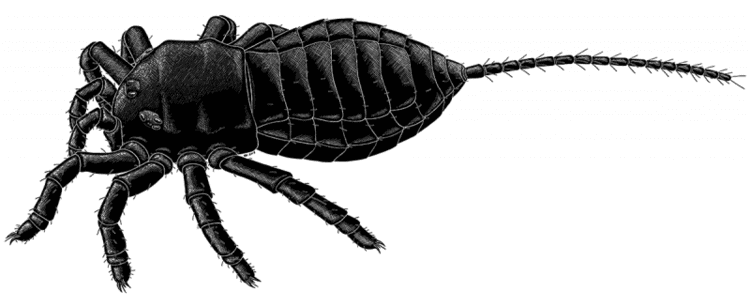Higher classification Arachnid | Rank Order | |
 | ||
Similar Arachnid, Phalangiotarbi, Plesiosiro, Arthropod, Idmonarachne | ||
Uraraneida is an extinct order of arachnids, known from fossils of Middle Devonian and Permian age, suggesting the order persisted from at least 393 to 252 million years ago. As of March 2016, two genera of fossils were placed in this order: Attercopus and Permarachne. They were initially identified as spiders, but now constitute the Uraraneida, a separate but closely related group.
Contents
Characteristics
The first fossil now placed in the order was found in Gilboa, New York. In 1987, it was initially tentatively placed in the extinct order Trigonotarbida and named Gelasinotarbus? fimbriunguis. Later, partly on the basis of a supposed spinneret, it was identified as a spider and named Attercopus fimbriunguis. Further specimens of this species were found, and when examined in detail, along with those assigned to the genus Permarachne, features inconsistent with their placement as spiders were revealed. Silk producing spigots are present, but are borne along the rear edges of ventral plates, not on appendage-like spinnerets, as in spiders. The specimens also have a long, jointed "tail" or flagellum at the end of the abdomen, after the anus, a feature lacking in spiders but present in some other arachnids, such as uropygids.
Phylogeny and classification
A 2014 study placed the Uraraneida in the Tetrapulmonata, a clade of arachnids defined by the apomorphy (derived feature) of two pairs of book lungs. The Tetrapulmonata divide into two main clades, one of which, Serikodiastida (Greek for "silk workers"), unites Uraraneida and Araneae (spiders), groups that share the ability to produce and use silk.
An alternative classification suggested by Wunderlich in 2015, based on the same phylogeny, makes Uraraneida a suborder of Araneae, with "true spiders" treated as suborder Araneida.
In 2016, a fossil arachnid from the Late Carboniferous (Pennsylvanian) age was described under the name Idmonarachne brasieri. It resembles uraraneids in lacking spinnerets, but unlike them resembles spiders in lacking a flagellum. The Late Carboniferous appears to be a time when there was a greater diversity of tetrapulmonate arachnids, of which the uraraneids were just one group.
Genera and species
Dunlop et al. (2015) accepted two species:
